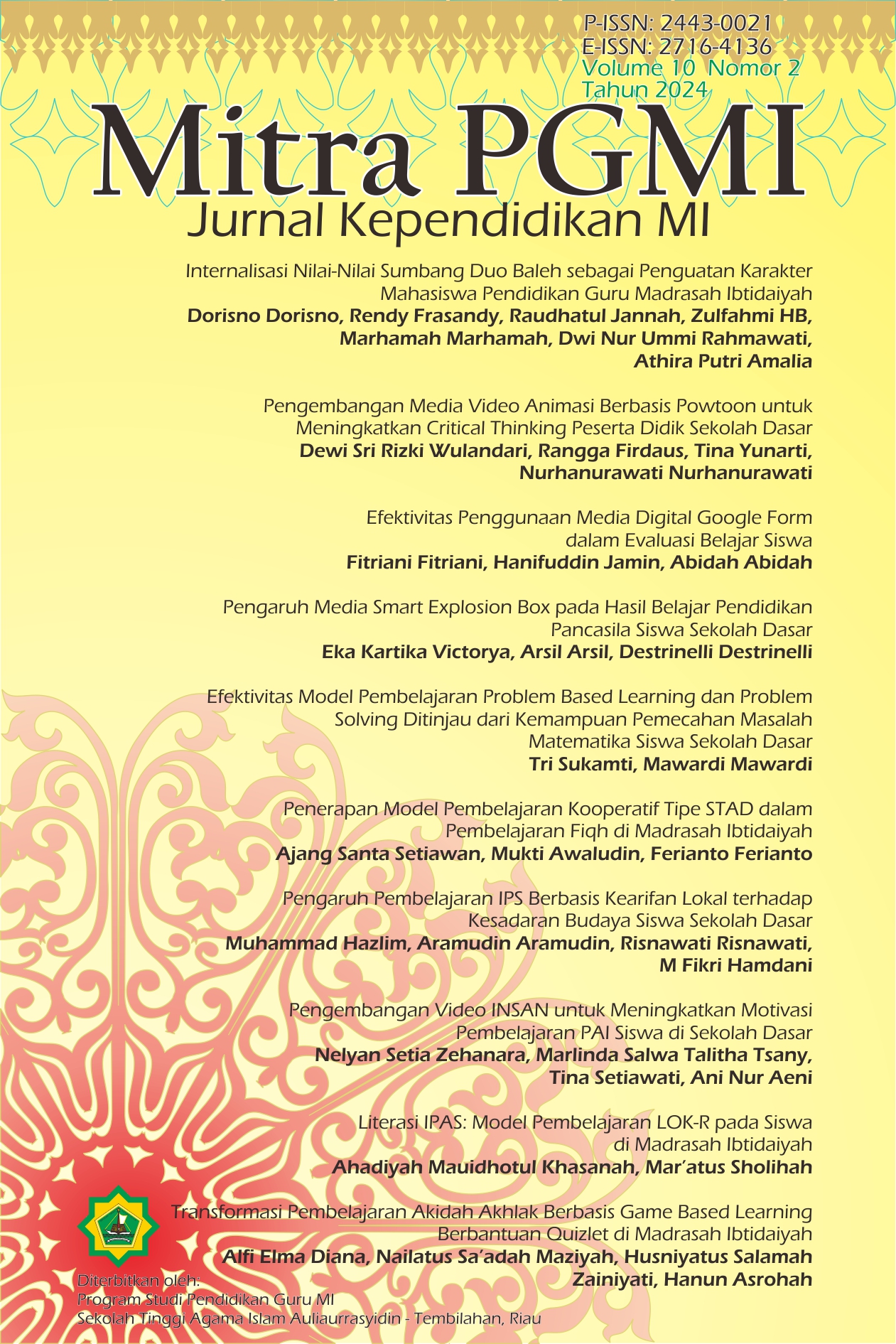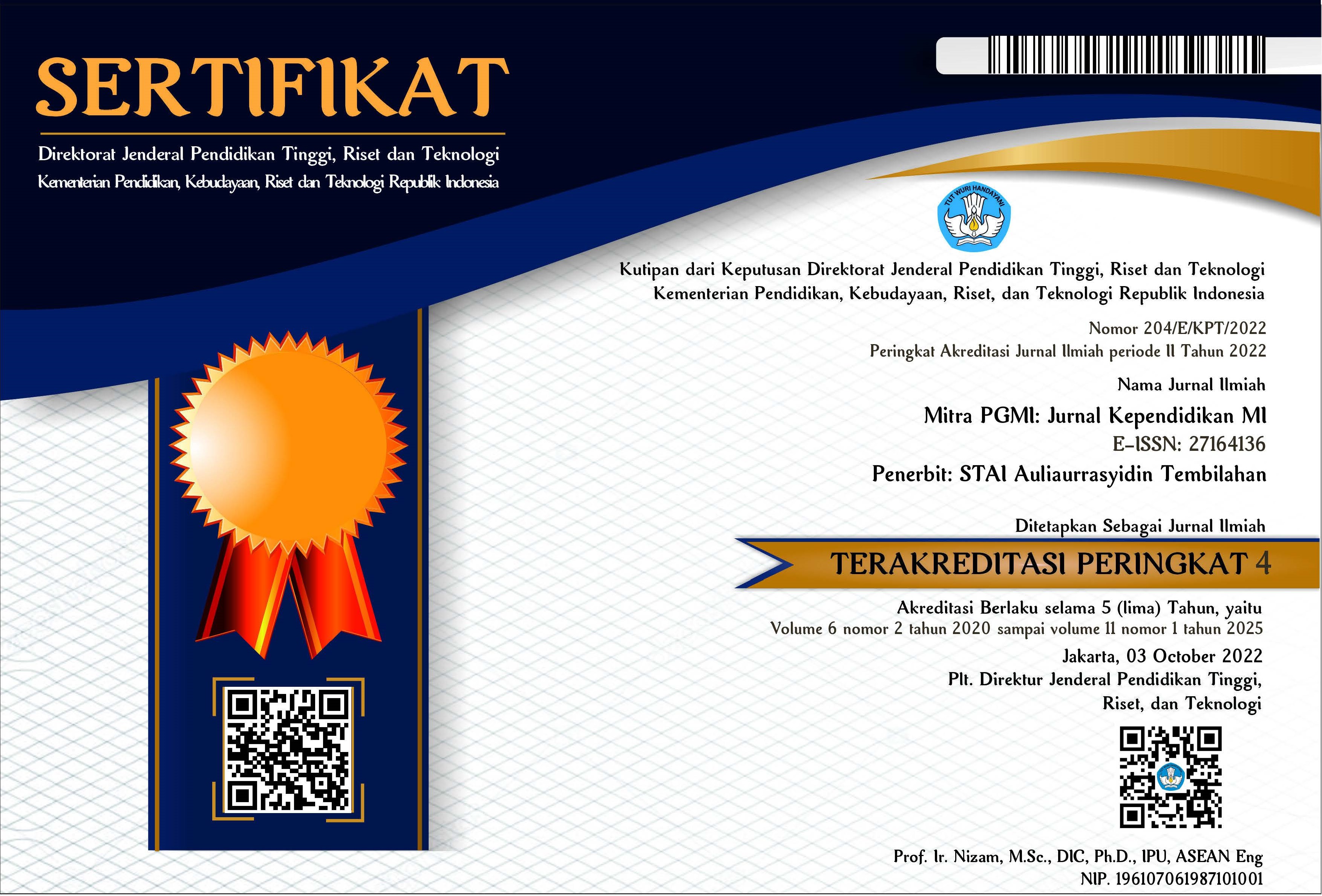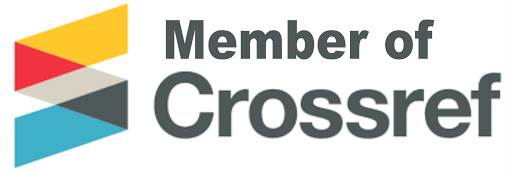Pengembangan Video INSAN untuk Meningkatkan Motivasi Pembelajaran PAI Siswa di Sekolah Dasar
DOI:
https://doi.org/10.46963/mpgmi.v10i2.1792Keywords:
Animation Videos, PAI, MotivationAbstract
Islamic Religious Education (PAI) learning can be used as an effort to foster an attitude of respect for diversity from an early age. However, students' learning motivation in PAI learning is still low, mainly due to the dominant and teacher-centered lecture method. This study aims to examine the effectiveness of INSAN (The Beauty of Mutual Respect in Diversity) animated video in increasing students' learning motivation in PAI learning. The research method used is Design and Development (D&D) with the ADDIE development model. The data was collected using a questionnaire and the feasibility test was conducted on 19 fourth grade students of SDN Sukanagara, Sumedang. The validation results showed that the INSAN animated video obtained an average percentage of 90.0% (very feasible) from media experts and 84.9% (very feasible) from material experts. The student response questionnaire showed an average percentage of 88.3%, which indicates a very positive response and high feasibility. In conclusion, the INSAN animated video is effective in increasing motivation to learn PAI and developing mutual respect in diversity.
Downloads
References
Aeni, A. N., Handari, M. D., Wijayanti, S., & Sutiana, W. S. (2022). Pengembangan Video Animasi Light Pedia Sebagai Media Dakwah Dalam Pembelajaran di SD. Al-Madrasah: Jurnal Pendidikan Madrasah Ibtidaiyah, 6(3), 721–730. https://doi.org/10.35931/am.v6i3.1077
Aeni, A. N., Khulqi, R., Latifa, A. D., & Inayah, A. N. (2022). Pemanfaatan Video Pembelajaran “Kepemimpinan Khulafaur Rasyidin” Sebagai Media Pembelajaran Politik Islam Siswa SD. Al-Madrasah: Jurnal Pendidikan Madrasah Ibtidaiyah, 6(4), 979–990. https://doi.org/10.35931/am.v6i4.1097
Aeni, A. N. N., Fauziah, A. N., A., I., & Fauzi, I. A. (2022). Pemanfaatan Media Animasi Berbasis Aplikasi Renderforest Dalam Membentuk Kepribadian Islami Bagi Siswa Sekolah Dasar Kelas 4. Jurnal Pendidikan Dan Teknologi Indonesia, 2(6), 279–287. https://doi.org/10.52436/1.jpti.183
Badriah, I. N., Saefuddin, A., & Muhamadi, S. I. (2021). Penerapan Media Poster untuk Meningkatkan Motivasi Belajar pada Mata Pelajaran Akidah Akhlak. Mitra PGMI: Jurnal Kependidikan MI, 7(1), 49–58. https://doi.org/10.46963/mpgmi.v7i1.172
Barbara, N. K. R., & Bayu, G. W. (2022). Powtoon-Based Animated Videos as Learning Media for Science Content for Grade IV Elementary School. International Journal of Elementary Education, 6(1), 29–37. https://doi.org/10.23887/ijee.v5i4.39821
Cahyadi, R. A. H. (2019). Pengembangan Bahan Ajar Berbasis Addie Model. Halaqa: Islamic Education Journal, 3(1), 35–42. https://doi.org/10.21070/halaqa.v3i1.2124
Candra Dewi, N. M. L., & Negara, I. G. A. O. (2021). Meningkatkan Semangat Belajar Siswa Melalui Video Animasi IPA pada Pokok Bahasan Sistem Pernapasan Kelas V. Jurnal Edutech Undiksha, 9(1), 122–130. https://doi.org/10.23887/jeu.v9i1.32501
Hanifah, H., & Maslikhah. (2022). Pengembangan E- Comic Education pada Mata Pelajaran Ilmu Pengetahuan Alam Materi Gaya dan Manfaatnya. Mitra PGMI: Jurnal Kependidikan MI, 8(2), 60–74. https://doi.org/10.46963/mpgmi.v8i2.525
Intaniasari, Y., & Utami, R. D. (2022). Menumbuhkan Antusiasme Belajar Siswa Sekolah Dasar Melalui Media Audio-Visual Dalam Pembelajaran. Buletin Literasi Budaya Sekolah, 4(1), 25–36. https://doi.org/10.23917/blbs.v4i1.17752
Jamaludin, U., Pribadi, R. A., & Arrasyidi, L. A. (2023). Pemanfaatan Media Pembelajaran Berbasis Video Animasi dalam Memotivasi Belajar Peserta Didik Sekolah Dasar. Didaktik : Jurnal Ilmiah PGSD STKIP Subang, 9(2), 2640 – 2650. https://doi.org/10.36989/didaktik.v9i2.941
Komalasari, K., Khaerunisa, R., & Aeni, A. N. (2022). Penggunaan Video Animasi Kartun Islami untuk Meningkatkan Pengetahuan Keislaman Siswa Sekolah Dasar. Jurnal Basicedu, 6(3), 3962–3971. https://doi.org/10.31004/basicedu.v6i3.2734
Mulyasari, W. (2023). No Title. Pengembangan Media Animasi Berbasis Local Wisdom Untuk Kelancaran Membaca Siswa Sekolah Dasar [Thesis, Universitas Pendidikan Indonesia. http://repository.upi.edu/id/eprint/106202
Musya’adah, U. (2020). Peran Penting Pendidikan Agama Islam Di Sekolah Dasar. AULADA: Jurnal Pendidikan Dan Perkembangan Anak, 1(2), 9–27. http://e-journal.ikhac.ac.id/index.php/aulada
Panjaitan, D. J., Ridawan, M., & Aprilia, R. (2022). Pengembangan Media Pembelajaran Berbasis Website Untuk Meningkatkan Motivasi Belajar Siswa Pada Masa Pandemi Covid-19. AKSIOMA. Jurnal Program Studi Pendidikan Matematika, 11(2), 1524–1536. https://doi.org/10.24127/ajpm.v11i2.4875
Prasetya, A. T., Yanti, R. D., Nurrahman, Z., & Aeni, A. N. (2022). Pemanfaatan Video Animasi WOL (way of life) sebagai Media Pembelajaran SKI siswa di Kelas 4 SD/MI. Jurnal Pendidikan Tambusai, 6(2), 16353–16359. https://doi.org/10.31004/jptam.v6i2.5073
Rapiyah, E. (2020). Rancangan Pembelajaran Kooperatif Model Pair Check Untuk Meningkatkan Keterampilan Kerja Sama Siswa Kelas Iii Sekolah Dasar. Http://repository.upi.edu/id/eprint/55009
Siska, M., Nuraisyah, N., Zarina, D., Velinda, I., & Aeni, A. N. (2022). Analisis Penggunaan Video sebagai Media Pembelajaran Terpadu terhadap Motivasi Belajar Siswa. Jurnal Pendidikan Dan Teknologi Indonesia, 2(1), 19–26. https://doi.org/10.52436/1.jpti.134
Solihatini, I. T., Abidin, Y., Nailul, S., & Aljamaliah, M. (2021). Pengembangan Media Video Motion Graphic dalam Pembelajaran Menulis Pantun pada Masa Pandemi Covid 19. Diksa: Pendidikan Bahasa Dan Sastra Indonesia, 7(2), 80–89. https://doi.org/10.33369/diksa.v7i2.2089
Tafonao, T. (2018). Peranan Media Pembelajaran Dalam Meningkatkan Minat Belajar Mahasiswa. Jurnal Komunikasi Pendidikan, 2(2), 103–114. https://doi.org/10.32585/jkp.v2i2.113
Widiyasanti, M., & Ayriza, Y. (2018). No Title. Pengembangan Media Video Animasi Untuk Meningkatkan Motivasi Belajar Dan Karakter Tanggung Jawab Siswa Kelas V. Jurnal Pendidikan Karakter, 8(1), 1–16. https://doi.org/10.21831/jpk.v8i1.21489.
Downloads
Published
Issue
Section
License
Copyright (c) 2024 Nelyan Setia Zehanara, Marlinda Salwa Talitha Tsany, Tina Setiawati, Ani Nur Aeni

This work is licensed under a Creative Commons Attribution-ShareAlike 4.0 International License.
Authors who publish with this journal agree to the following terms:
1. Copyright on any article is retained by the author(s).
2. The author grants the journal, right of first publication with the work simultaneously licensed under a Creative Commons Attribution shareAlike 4.0 International License that allows others to share the work with an acknowledgment of the work’s authorship and initial publication in this journal.
3. Authors are able to enter into separate, additional contractual arrangements for the non-exclusive distribution of the journal’s published version of the work (e.g., post it to an institutional repository or publish it in a book), with an acknowledgment of its initial publication in this journal.
4. Authors are permitted and encouraged to post their work online (e.g., in institutional repositories or on their website) prior to and during the submission process, as it can lead to productive exchanges, as well as earlier and greater citation of published work.
5. The article and any associated published material is distributed under the Creative Commons Attribution-ShareAlike 4.0 International License








2.png)


